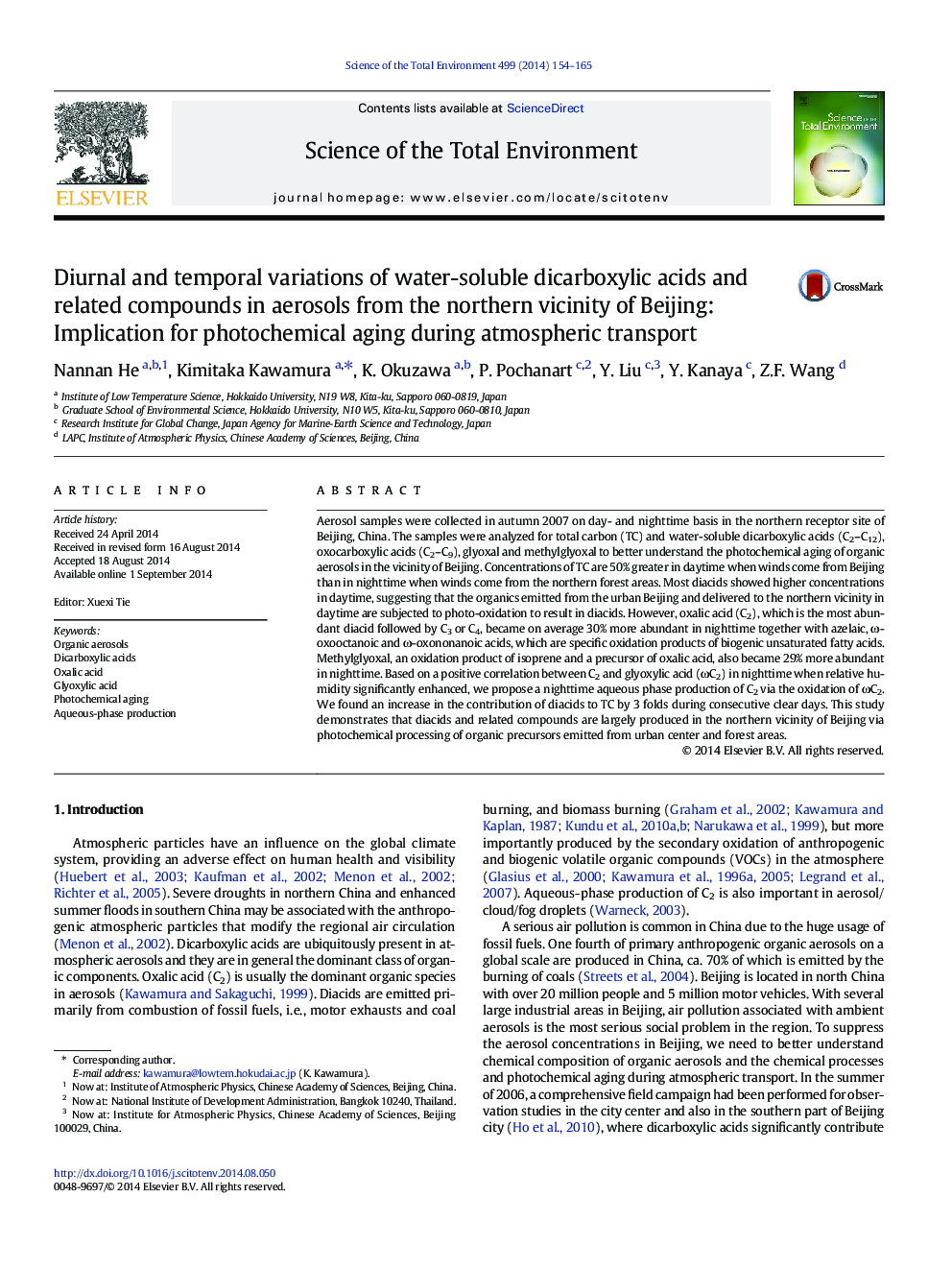| Article ID | Journal | Published Year | Pages | File Type |
|---|---|---|---|---|
| 6328879 | Science of The Total Environment | 2014 | 12 Pages |
Abstract
Aerosol samples were collected in autumn 2007 on day- and nighttime basis in the northern receptor site of Beijing, China. The samples were analyzed for total carbon (TC) and water-soluble dicarboxylic acids (C2-C12), oxocarboxylic acids (C2-C9), glyoxal and methylglyoxal to better understand the photochemical aging of organic aerosols in the vicinity of Beijing. Concentrations of TC are 50% greater in daytime when winds come from Beijing than in nighttime when winds come from the northern forest areas. Most diacids showed higher concentrations in daytime, suggesting that the organics emitted from the urban Beijing and delivered to the northern vicinity in daytime are subjected to photo-oxidation to result in diacids. However, oxalic acid (C2), which is the most abundant diacid followed by C3 or C4, became on average 30% more abundant in nighttime together with azelaic, Ï-oxooctanoic and Ï-oxononanoic acids, which are specific oxidation products of biogenic unsaturated fatty acids. Methylglyoxal, an oxidation product of isoprene and a precursor of oxalic acid, also became 29% more abundant in nighttime. Based on a positive correlation between C2 and glyoxylic acid (ÏC2) in nighttime when relative humidity significantly enhanced, we propose a nighttime aqueous phase production of C2 via the oxidation of ÏC2. We found an increase in the contribution of diacids to TC by 3 folds during consecutive clear days. This study demonstrates that diacids and related compounds are largely produced in the northern vicinity of Beijing via photochemical processing of organic precursors emitted from urban center and forest areas.
Related Topics
Life Sciences
Environmental Science
Environmental Chemistry
Authors
Nannan He, Kimitaka Kawamura, K. Okuzawa, P. Pochanart, Y. Liu, Y. Kanaya, Z.F. Wang,
